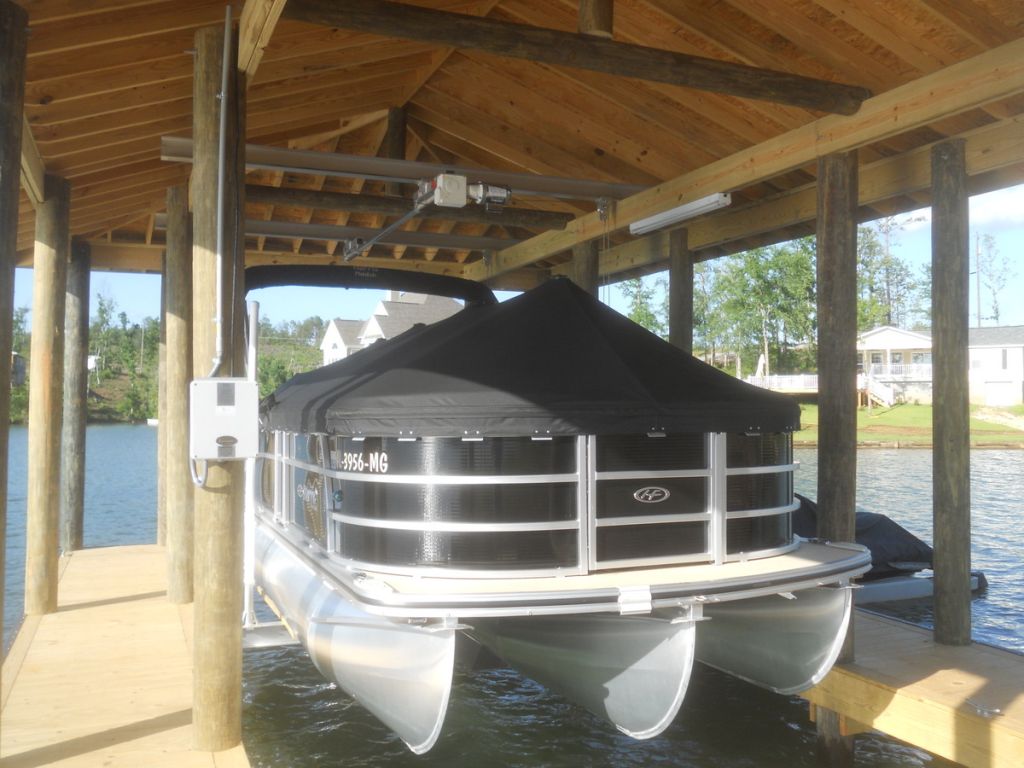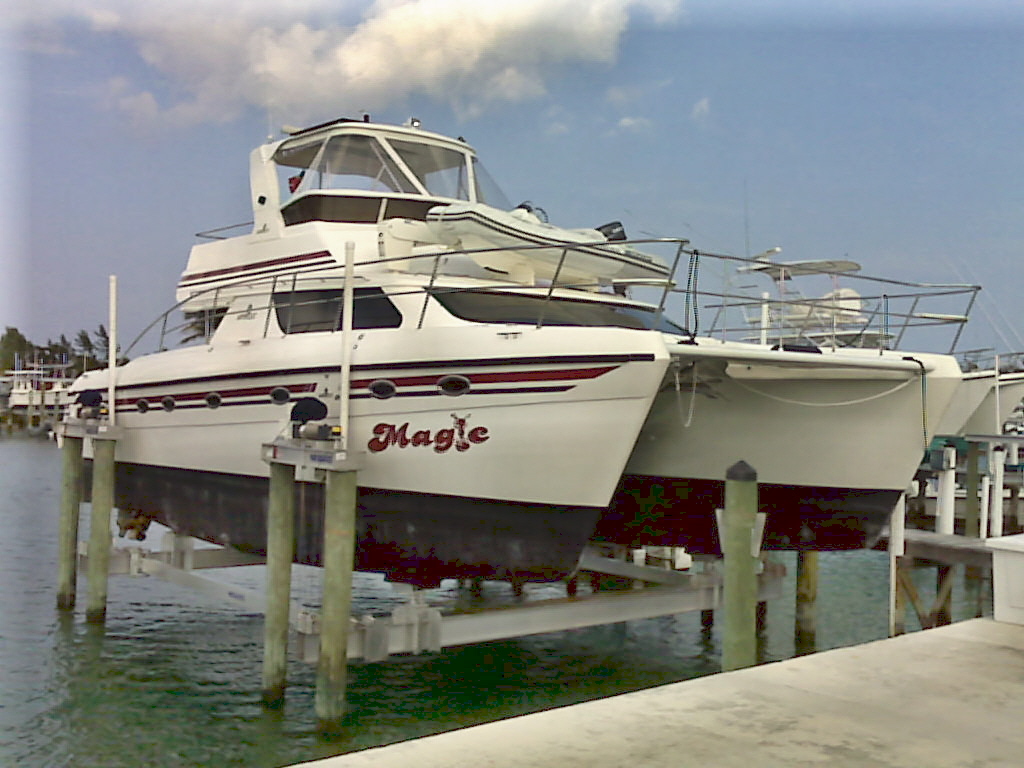
Deck boats and party barges have seen a huge surge in popularity within the pleasure boating market, and for good reason. One of the great pleasures in boating is being able to hang out with a group of friends in a relaxed, “it’s 5 o’clock somewhere” setting. Whether pontoon boat, catamaran, or multi-hull, there are some easy steps to take to ensure that these types of vessels, with their large square footage and infinite accessories, stay properly supported when out of the water and on your boat lift.
The first step is to find out if the manufacturer has any recommended or required methods to properly support these vessels. Sometimes boat builders have exact support designs to ensure hull protection, making the process a no-brainer (especially if the vessel is still under warranty). If the manufacturer has no specific recommendations, then the next step is to examine the trailer on which the vessel was hauled. Simply reproducing the trailer’s configuration is a good place to start, but be sure to examine the trailer and boat thoroughly to ensure that the trailer did not have a design flaw that caused damage to the boat. Also, be aware that certain types of trailer support systems are not easily transferred to a standard boat lift.
If the first two methods of support design are not available, you’ll need to design from scratch. The first thing to be aware of is what areas on the vessel are structurally sound. In most cases, it is the hulls or pontoons themselves that are designed to hold the load. This certainly makes sense since these are what supports the boats’ load in the water, but remember, water provides evenly distributed support throughout the hull. Once the vessel is raised from the water, some type of structure must support all loads. This creates potential “point loading” which is what damages vessels.

The safest configuration for most multi-hull boats is parallel longitudinal support of each of the outboard hulls. For vessels with more than two hulls, it is usually OK to support the outer two hulls and let the middle hull hang freely. For a round bottom aluminum pontoon, a V-shaped longitudinal support will often distribute the load well enough that the hulls won’t buckle or dent. Square edged fiberglass pontoons are usually best supported by flat, longitudinal bunks placed so that the corners of the hulls handle the majority of the load. On longer, multi-hull boats, be aware that the further the boat extends beyond the lifter beams, the less support the bunking system will provide the hull. The inherent flexibility in all materials tends to focus a higher amount of load directly over the lifter beams. One popular solution for long, bi-hull boats is to construct a raised structure that is elevated high enough to directly support the frame of the boat and keep the pontoons off the lifter beams. While these approaches are not comprehensive, they work for the majority of the multi-hull boats.
As with any hull style, each fit-up should be approached on an individual basis and never assumed that any two boats are the same. To be sure that your method of hull protection and support will work for your vessel, ask for guidance from your lift manufacturer and installing dealer. When you contact the manufacturer and/or installer, have as much information available as you can to prevent damage and ensure your vessel is around to provide relaxation for years to come.
Author: Craig Wood

